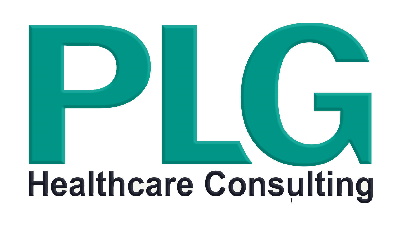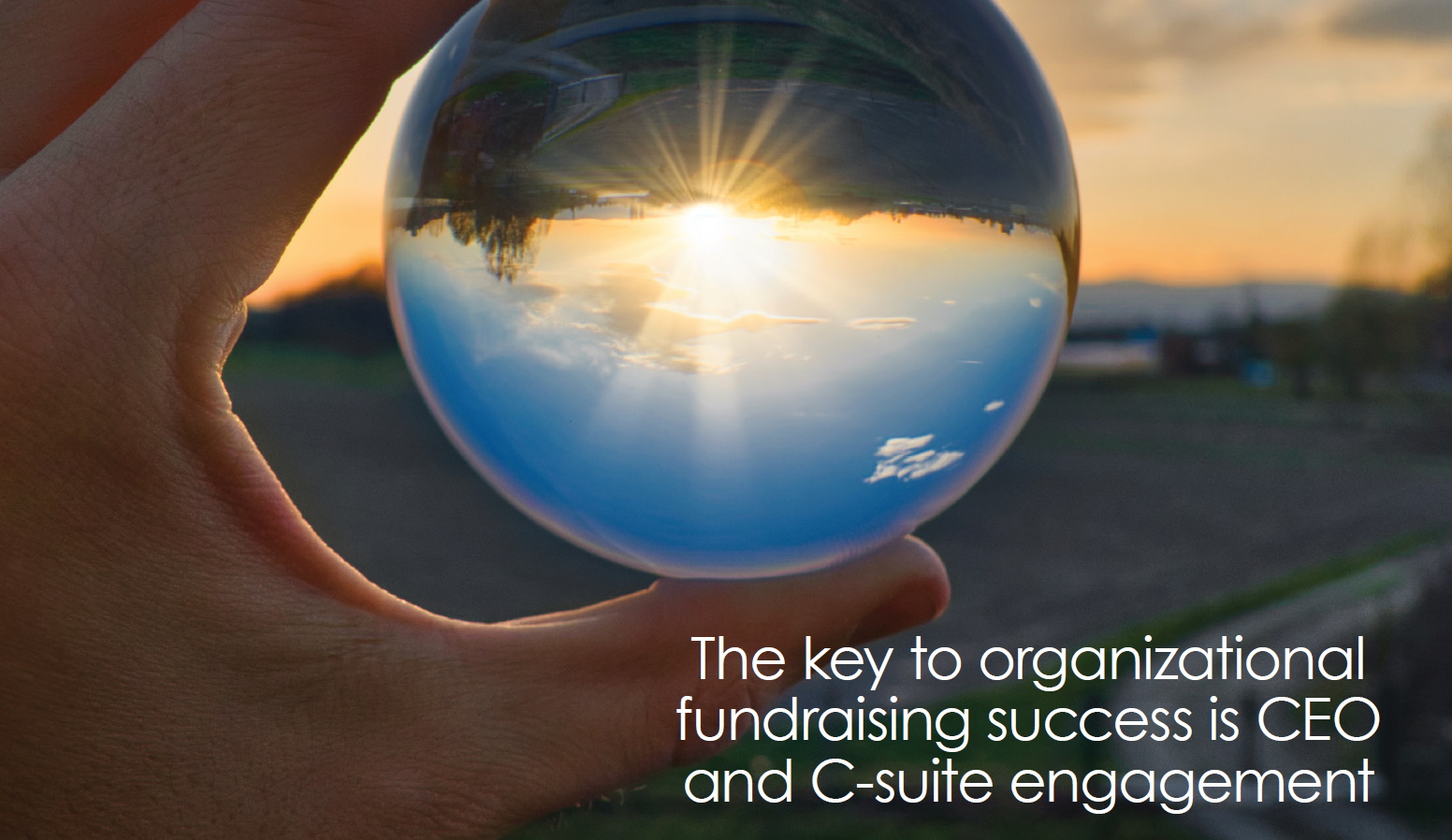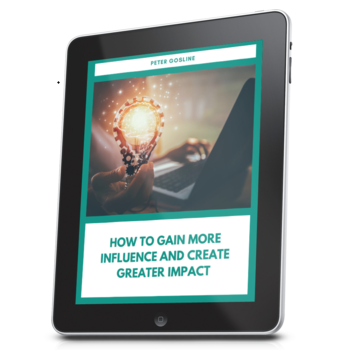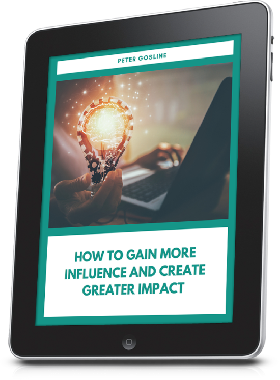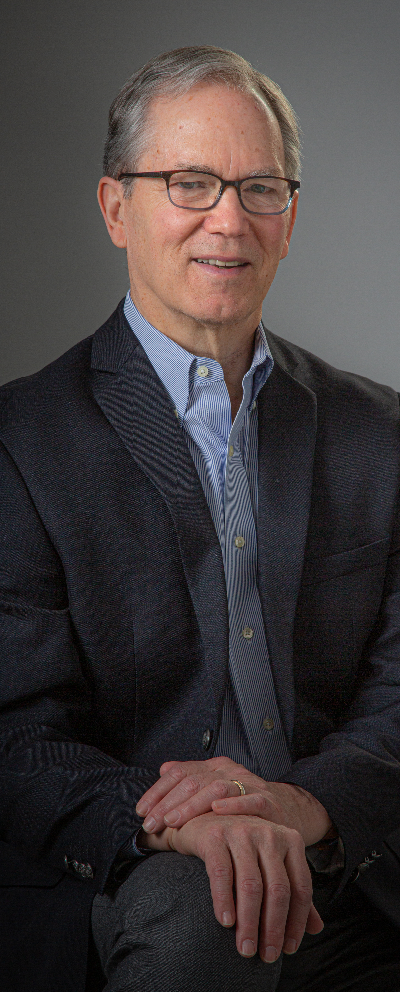“When done right, philanthropy can be a transformative experience for everyone, and the CEO and other members of the C-suite play a pivotal role in this transformation.”
~ Peter Gosline, Healthcare Executive Coach
Henry was peculiar. He was a character with a big heart and a soft spot for our hospital. I looked forward to my visits to his home, during which my chief development officer (CDO) and I were serenaded by the cacophony of his 300 antique clocks ticking not quite in unison … clocks he would wind religiously each day at 3 a.m. These formed the sometimes deafening, always fascinating, backdrop for our discussions, which ranged from antiques to hospital support to his views about anything and everything. I can still hear the ticking when I think of his generosity. My visits with Fred could have been laden with sorrow. After all, he had lost both his wife and daughter, and nobody deserves so cruel a fate. Somehow, though, Fred maintained an even demeanor in the face of terrible loss. Perhaps it was a survival instinct of a truly self-made man. Having literally started his career in a basement mailroom, he eventually became chief executive officer (CEO) of a well-known New York City-based advertising company. I remember being comforted, and even inspired, by his outlook on life and his persistent will to endure. His sense of humor emerged frequently, too. When the time was right to ask him for a seven-figure gift, he pretended his hearing aid had slipped out. “What did you say?” he asked. A building on campus now displays his name. Eleanor, born into great wealth, lived her life in service to others. She lived in a modest home, drove a used car, tended her own garden and kept current with politics, arts and science. As a younger woman, she had hiked some of the most challenging peaks in the world. She had both an iron will and a great sense of caring for those in need. Our visits to her old farm, sitting in lawn chairs, sharing stories and occasionally swatting mosquitos, are treasured memories. She had experience with world-class hospitals and had a unique appreciation for the gem of a hospital we had close to her home. She made a lead gift in a campaign in honor of her internist, whom she credited with saving her life. Larry was trained by the Massachusetts Institute of Technology, a very bright man, with a tremendous zest for life and incredible memory for details, even at 90. During some of my visits with him, he would be overcome by grief and his eyes would fill with tears while recounting stories about his late wife. I remember wishing there was a way I could help. What I didn’t realize at the time was that our discussions about generously supporting the hospital were doing just that. He eventually made a substantial gift to name our hospital’s new emergency room in her memory. During my tenure as CEO of Monadnock Community Hospital (MCH) in New Hampshire, one of my true joys was building meaningful relationships with donors such as Henry, Fred, Eleanor and Larry, all of whom eventually made seven-figure gifts. These and a number of other truly remarkable men and women had a permanent impact on me. The investment of my time and energy resulted in creating relationships that benefited these donors, the hospital and the community. Most importantly, over time, I helped create an environment where philanthropy could flourish. I started this journey with some trepidation about what was expected of me. How could I possibly learn and manage the rigors of fundraising in addition to other CEO responsibilities? With the guidance of a great CDO and others around me, I realized that this was an essential part of the job, and I really didn’t need to have every aspect of a program in place to initiate fundraising efforts. Eventually I learned to love these challenges and create a very successful track record. The tipping point was my first visit in a donor’s home, as we shared insights about our lives and interests. I realized that this was not a transaction; it was an investment in a relationship that would last for years. I also recognized the power of my position as CEO in cultivating and securing major gifts for our hospital and patients. Time spent with donors soon became of high value to me—and one of the most satisfying parts of my job. In order to encourage CEOs and their C-suite colleagues to invest in the fruitful and fulfilling area of philanthropy,
I’ll share 10 lessons learned from my personal journey that I believe can benefit every member of the C-suite and will be of interest to every CDO. 1. Devote sufficient time to the fundraising effort. Major gifts can take years of cultivation, so patience is indeed a virtue. My CDO and I visited Henry, Fred, Eleanor and Larry numerous times, sometimes just to say hello, and other times broaching the ask in a gentle way. We created a personalized plan for each of these donors based on their interests and preferences. Through research and those cultivation steps, we knew they had the resources and cared deeply about the hospital. All four wanted to support the hospital but clearly wanted to do so on their own terms and in their own time. And the relationship built with each of them was the bridge between their desire to make a difference and the realization of a major gift. Cultivating gifts of any size can consume large portions of your calendar. Foremost among these activities is staying visible to hundreds or even thousands of potential donors, often through special events, stewardship and acknowledgements. As CEO, I must have made between 50 and 100 phone calls each month to connect with and thank donors, and signed hundreds of letters each year as well. It seemed daunting at first, but I came to relish these communications, which were acknowledged and appreciated by grateful donors. Many new hospital CEOs are unaware of the impact fundraising will impose on their time. Budget more than you think you need. You will never regret it. 2. Use your board wisely. All members of the organization’s governance should be engaged, encouraged and educated on matters of philanthropy. They represent an essential element of your philanthropy program. Don’t let volunteer leadership spend its valuable time on events alone, but rather be strategic and efficient; review lists of donors and potential donors, including prospects in their personal and professional networks; take assignments for opening doors and occasional visits; and advise the CDO and CEO of what they find. If your board has a development committee, it should regularly report back to the full board the goals and accomplishments of the philanthropy program. 3. Work a plan. It’s vitally important to link your philanthropic strategy to your organizational strategy. All organizations have a strategic plan, whether written or unwritten. The lack of a written plan doesn’t mean there isn’t one. It just indicates a particular style of management and approach emanating from the C-suite and the board of directors. A well-defined and up-to-date plan allows all stakeholders to identify and promote priorities that are most important to the organization and, consequently, most compelling to donors— not just those needs that seem expedient. A detailed plan will not only provide a roadmap for growth but will address key donor concerns around mission, vision and brand. Why do you exist? What might the future hold? What differentiates you in the marketplace? Answers to such questions will underpin the more basic components of your plan. This information will form the pillars upon which you build your case for support, and serves to connect the donor’s legacy desires with your organizational strategy. 4. Engage other key administrators. If the C-suite members are not on board with the goals and objectives of the philanthropy program, it will be undermined or undervalued, eroding its effectiveness. If the C-suite is fully engaged, they can serve as willing partners by providing additional contacts, personally communicating the organizational mission and vision to others, reinforcing the importance of philanthropy to the hospital’s future viability and bringing their own unique styles, backgrounds and interests into closer connection with donors. 5. Give your CDO a seat at the table. I asked my CDO to be part of my senior leadership team, and I never regretted the decision—even though she had to sit through some operational discussions that were not particularly relevant to her work. A CDO should be privy to and have a voice in strategic decision making at the highest levels within the organization. Others should view that person as having the CEO’s ear and confidence. 6. Do your homework. Prospective donors find comfort in knowing that those leading the organization are in touch with who they are, what’s important to them, what’s going on with their families and businesses and what they are capable of contributing. In all of the asks I was part of, only once did we overestimate what a donor could do. Part of the CDO’s responsibility is ensuring you have current research to make informed decisions. Guesswork and intuition certainly play a role, but back up gut feelings with good data. There is reliable software available today that can accurately estimate giving potential. 7. Build capacity over time. As a new CEO, I had a lot to learn about building gift capacity. My earlier experience with fundraising involved minimal face-to-face meetings with prospective donors. It was primarily focused on events, corporate donors, grants and the occasional estate gift. Although important, focusing on these aspects alone is missing perhaps the biggest fundraising opportunity you will have as a CEO. I was very fortunate to receive on-the-job education in fundraising from a top-notch CDO, as well as the support of an outstanding fundraising consulting firm with deep experience in health care philanthropy. I would highly recommend this type of education and support for others in the C-suite who wish to maximize their impact. To build capacity at your organization, you should expect your CDO to prepare you for success with weekly call lists, timely strategic prompts and a playbook for each donor visit. Trust your CDO to encourage you to venture beyond your comfort zone—you may be surprised at the results. And when things don’t go as planned, be honest and nonjudgmental with each other, and use this information to improve your approach to donor research, style of communication, participation, timing of delivery and follow-through. Know that you miss 100 percent of the shots you don’t take! During my tenure at MCH, we executed two successful capital campaigns, working closely with our fundraising consultants. In both cases, we started with a comprehensive campaign planning study, followed by a structured, strategic campaign. Our first campaign raised $2.1 million, and our second campaign ultimately raised $10.6 million against an initial goal of $6 million. Fortunately, in this latter campaign, as we made some initial asks, we were able to identify a few large gifts that hadn’t been anticipated, and consequently, we realized a higher campaign goal than had originally been projected.
Throughout both campaigns, I realized that success was based on relationships that had been established long before the initiative was even considered. Those relationships needed to be cultivated over time, through multiple interactions, openness to hear both positive and negative feedback, and honesty about what could be accomplished. Eventually, a relationship of trust is established, and an ask made possible. And it is very important to maintain a close rapport with a donor following the ask, whether or not the donor responds positively to it. Most of my asks involved more than one request, and several times the donor increased his or her pledge after responding positively to the first ask. I believe events do have their place in the donor philanthropic pipeline, but in most cases their real importance lies with building enthusiasm for the organization’s mission and identifying important donors for the future, not raising significant funds for the present. 8. Involve physicians and caregivers. Caregivers have a special place within the organization and the community as well as a special relationship with each consumer. They engender a high degree of public exposure and exert considerable influence as the key link to grateful patients and the giving potential of that critical constituency. Nursing is consistently ranked among the most trusted professions. Having physicians and caregivers on board with organizational strategy, enthusiastic about the sincerity of the vision and able to tell the hospital’s story can advance the philanthropic agenda, as well as build and nurture a culture of philanthropy with all employees throughout the organization. Another way to look at it is if they’re not fully on board or—worse yet—apathetic, it can really take the wind out of the sails of a successful program. Also, physicians and other caregivers are very effective advocates for the organization, and we were fortunate to have a number of them willing to participate in our campaign, both personally and in meetings with others who were considering making donations. 9. Invest in experienced legal and campaign counsel. An investment in knowledgeable fundraising legal counsel will pay considerable dividends. These individuals will help you to respond quickly and efficiently to donors and avoid legal risks when establishing agreements between donors and your organization. These can range from a relatively small gift annuity to an agreement for a naming opportunity that involves a seven-figure donation. They can also help you make sure that the legal documents, such as commitment letters and planned estate giving options, are fully and fairly represented to donors. In each of our MCH campaigns, we engaged a leading firm in health care philanthropy with professionals who helped us plan and execute our capital campaign. As a result of each successful campaign, we developed a significantly more mature and robust philanthropy program, one that established realistic goals for capital projects, prioritized our fundraising efforts, and set performance goals for our staff. Eventually, we created a 10- year projection of fundraising capacity linked to our strategic needs. Our approach to major and planned gifts emerged organically, and our strategic efforts gave us solid credibility with the board and our donor community. 10. Lead by example. As CEO, you are often the face of fundraising. Be visible, especially during asks. Share the vision of the organization, and demonstrate to others how to articulate a case for giving. Be a passionate and generous giver yourself. My CDO loved to say that if we can’t get passionate about the case, how do we expect someone to invest in it? And most importantly, devote time each day to the effort— make calls, attend meetings and presentations, send letters. Act as a mentor and coach, and remain open to your own continued learning and growth.
Conclusion
I often think back to those visits with Henry, Fred, Eleanor, Larry and so many others with generous hearts and extraordinary spirits. In fact, those relationships I developed over time provided my greatest education about fundraising and the impact we all could have on it. They inspired me to embrace that role, and perhaps I inspired them in some collaborative way to make major contributions to the hospital. About the author: Peter L. Gosline, LFACHE, is a Life Fellow in the American College of Healthcare Executives and a former hospital chief executive officer (CEO) with a career spanning more than 30 years. As CEO of two community hospitals in New Hampshire, his strategic abilities led to three capital campaigns, the largest exceeding $10 million. In 2014, he founded PLG Consulting, serving hospitals and health care organizations, specializing in executive coaching, philanthropy, interim management, organizational strategy, governance and advocacy. Gosline also collaborates with Ghiorsi & Sorrenti Inc. to coach CEOs in the strategic philanthropic process and in gift solicitation.
